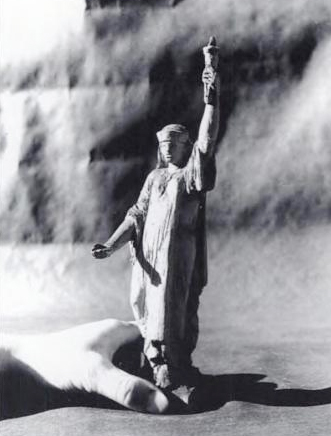The United States has debated immigration since the country’s founding, and the Statue of Liberty —a potent symbol for immigrants— is often invoked as an argument for why we should usher in those who seek safety and opportunity with open arms. A littleknown fact about Lady Liberty adds an intriguing twist to today’s debate about refugees from the Muslim world: As pointed out by The Daily Beast’s Michael Daly in a recent op-ed, the statue itself was originally intended to represent a female Egyptian peasant as a Colossus of Rhodes for the Industrial Age.
That might be surprising to people more familiar with the statue’s French roots than its Arab ones. The statue’s designer, Frédéric-Auguste Bartholdi, was French, but he found inspiration in a very different place: Egypt. In 1855, he visited Nubian monuments at Abu Simbel, which feature tombs guarded by gigantic colossus figures. Bartholdi became fascinated by the ancient architecture, developing a passion for large-scale public monuments and colossal structures. Eventually, he channeled that passion into a proposal for the inauguration of the Suez Canal. But Egypt, which had invested enormous amounts of time and money into the landmark canal, was not as eager about Bartholdi’s idea, rejecting the plan as too costly.
Eventually, a 180-foot tall lighthouse was installed at Port Said instead. But Bartholdi was not discouraged. He eventually repurposed his concept into “Liberty Enlightening the World”—the official name for the statue that has been overlooking New York Harbor since 1886.
Source: Smithsonian magazine















No Comments